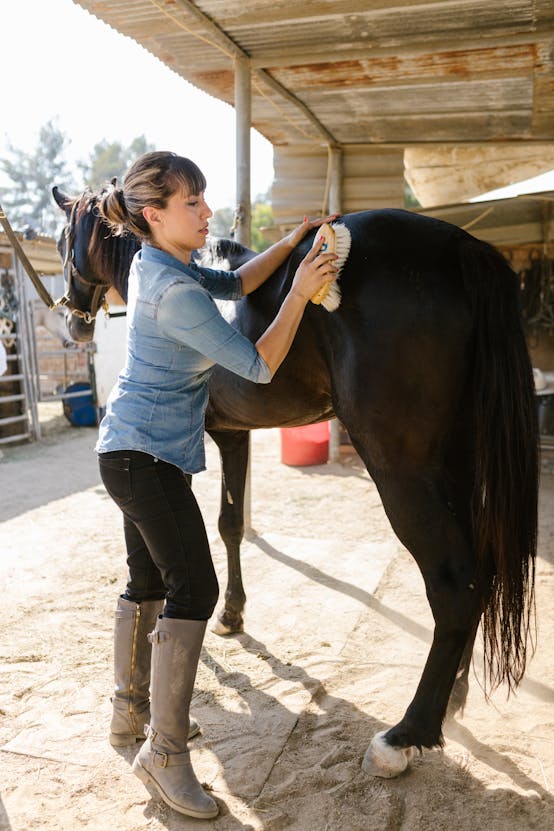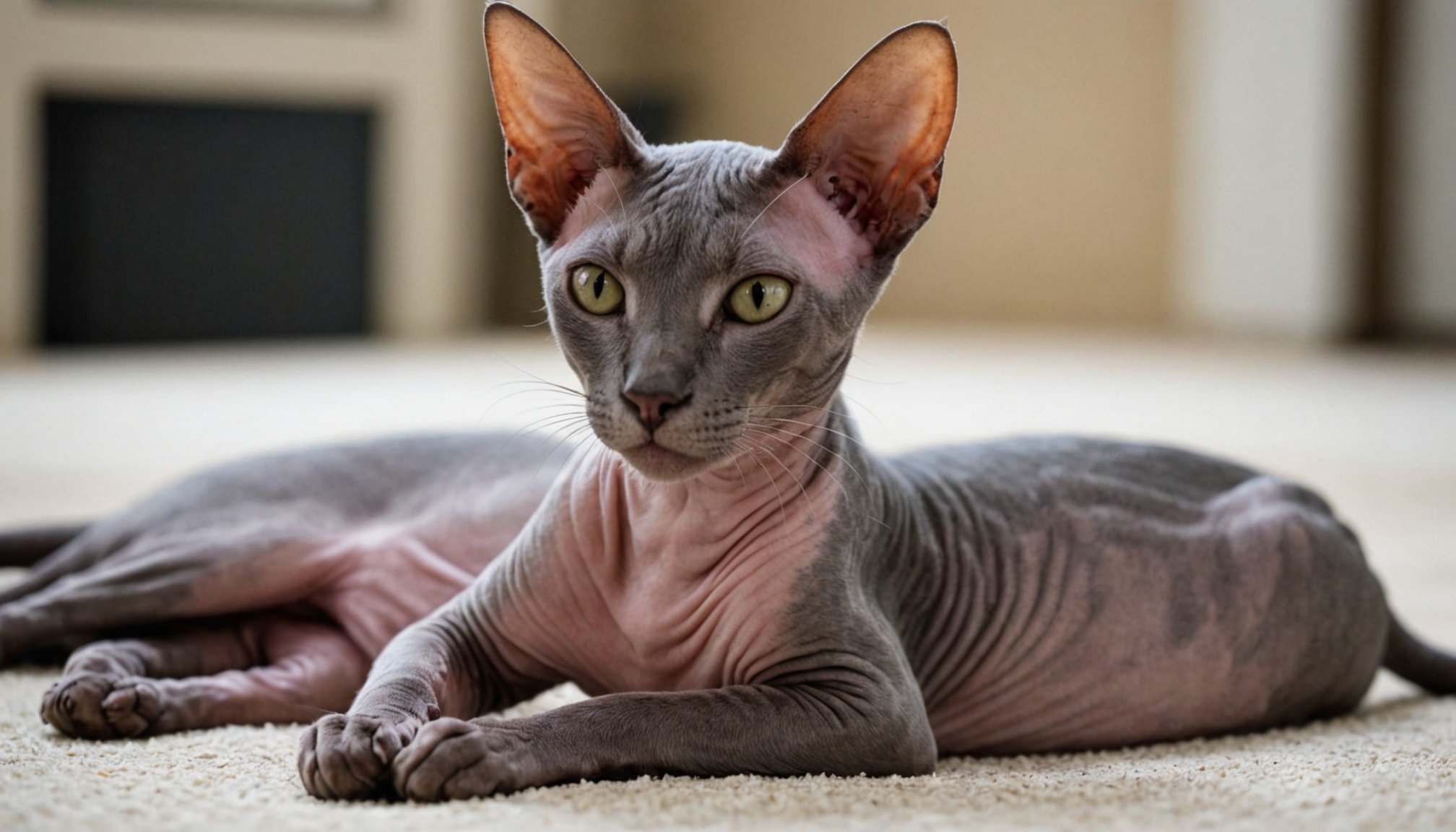Understanding the Unique Needs of Hairless Cat Breeds
Hairless cats, like the Peterbald, are unique in their care requirements. Unlike their furry counterparts, their skin is exposed, necessitating specific skin protection practices. Proper hairless cat care involves understanding these needs to ensure their comfort and health.
The Peterbald is known for its sleek, hairless appearance. Without a coat, their skin is directly vulnerable to various environmental factors. Protecting a Peterbald’s skin from the sun is crucial, as they can easily suffer from sunburn. Using pet-safe sunscreen can help shield them, especially during outdoor activities.
En parallèle : Essential Steps to Design a Secure and Stimulating Play Space for Kittens
In terms of health, temperature regulation is another vital consideration. Without the natural insulation of fur, hairless cats may struggle to maintain their body heat. Therefore, it is essential to keep them warm with feline-appropriate clothing or cosy blankets.
Moreover, hairless cats are prone to skin-related health issues if their care is neglected. Regular baths are recommended to remove excess oils that can accumulate without fur to absorb them. These oils can lead to skin irritations or infections if not managed properly.
Sujet a lire : Essential Steps to Design a Cozy and Secure Outdoor Cat Enclosure
Understanding these Peterbald needs ensures these unique felines remain healthy and engaged in their environments, leading to a happy pet life.
Optimal Room Temperature for Comfort
Creating a comfortable environment for your feline companion is essential for their well-being. Specifically, the ideal temperature for cats, particularly hairless breeds, ranges from 20 to 24 degrees Celsius. These cats, lacking an insulating layer of fur, are more sensitive to fluctuations in temperature, making precise climate control even more crucial.
Achieving this balance might require a mix of air conditioning and heating solutions. In warmer seasons, maintaining the coolness of a room can be handled efficiently with a modern air conditioning system. These systems allow you to set and maintain a steady temperature, ensuring it doesn’t rise to levels uncomfortable for your pet. Conversely, during colder months, a reliable heating setup is necessary, especially if temperatures fall below the recommended range.
To maintain these conditions, monitoring devices like smart thermostats can be invaluable. They can adjust settings automatically, ensuring that your cat’s environment remains within the desired temperature range. Regular checks and maintenance of your temperature control systems can prevent unexpected changes that might lead to discomfort for your pet. This attention to detail secures an environment conducive to a cat’s health and happiness.
Bedding and Environment Adjustments
Creating a comfortable sleeping area for your hairless cat involves careful attention to their unique needs. Hairless cats often lose more body heat due to lack of fur, making it essential to create a warm and cozy spot.
When selecting materials, opt for fleece or wool for cat bedding, as they provide warmth and softness. These fabrics help maintain your cat’s body temperature, ensuring a snug environment. Place the bed in a location that’s free from drafts and cold spots to prevent discomfort.
Additionally, consider incorporating a heating pad specifically designed for pets, which can offer additional warmth during colder months. Avoid using electric heating pads meant for human use, as they may pose safety risks.
Environment tips are also vital. Ensure your cat has access to sunlight for natural warmth and regularly check the sleeping area for cleanliness to protect their sensitive skin. Well-chosen bedding and attention to their environment can significantly enhance the quality of life for your hairless feline friend.
Skin Care and Hydration Techniques
Caring for hairless cats, such as Peterbalds, requires meticulous attention to their skin care. Their hydration needs are uniquely impacted by environmental factors like temperature. Warmer climates can cause their skin to dry out, while cooler temperatures might lessen the natural oils, necessitating a delicate balance to maintain skin health.
Peterbalds benefit greatly from a variety of moisturizing tips. Opt for hypoallergenic, non-toxic products specifically designed for pets. Aloe vera and coconut oil are popular choices due to their natural soothing properties. It’s essential to manage the application balance to avoid over-moisturising which could lead to clogged pores or irritation.
Incorporating hydration techniques into their routine ensures their comfort and wellbeing. Keep their skin clean by gently wiping it with a moist, soft cloth regularly. This method helps to remove excess oil and dirt, promoting healthy skin. Additionally, maintaining humidity in their environment can alleviate dryness and prevent skin issues.
Monitoring your cat’s behaviour and skin regularly will help detect any hydration needs or skin care concerns early. This proactive approach, paired with appropriate moisturizing techniques, contributes to their overall health and happiness.
Monitoring and Adapting to Climate Conditions
Hairless cats, known for their distinct lack of fur, are particularly sensitive to their surroundings. Recognising signs of temperature discomfort is crucial for their well-being. When exposed to cold, hairless cats might exhibit shivering or retreat to warmer spots. Conversely, excessive heat can lead to panting or seeking shaded areas.
Adapting care routines based on seasonal changes is key to keeping your feline friend comfortable. In colder months, consider providing warm bedding and ensuring their environment remains consistently cozy. Heaters or specially designed cat clothing may also help manage colder climates. During warmer periods, it’s important to prevent overheating by offering cool, shaded spaces and ensuring they stay hydrated.
Temperature monitoring tools, such as indoor thermometers, can assist in maintaining an optimal climate for your cat. These devices allow pet owners to adjust heating or cooling systems as needed, ensuring the indoor environment remains within a comfortable range. Monitoring the temperature aids in preemptively addressing any discomfort your hairless cat might encounter.
Health Considerations Related to Temperature
When it comes to temperature-related health issues, extreme temperatures can significantly affect your hairless cat’s well-being. These cats lack a protective fur coat, making them more susceptible to temperature fluctuations.
Exposure to severe cold often results in hypothermia. Symptoms include shivering, lethargy, and cold extremities, requiring vet advice immediately. On the other hand, hot conditions could lead to heatstroke. Watch for panting, drooling, or fever, conditions requiring urgent care.
Adopting prevention strategies is crucial. For colder months, ensure your cat stays warm by using pet sweaters or heated beds. In hotter climates, maintain a cool environment with shaded areas, cooling mats, or fans. And never leave them unattended in vehicles, particularly during summer.
Vet advice is invaluable if you notice any unusual behaviour due to temperatures. Regular check-ups can help in identifying vulnerabilities and determining the best prevention strategies for your pet. If symptoms persist, consulting a vet ensures the right steps are taken to maintain your cat’s health despite temperature changes.













